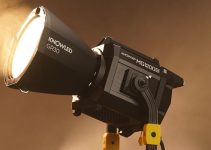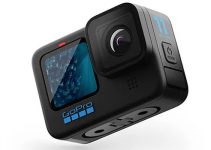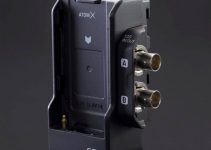Needless to say, Sony has been totally dominating the mirrorless camera market with their Alpha series and for good reason. The company has designed their products with advanced imaging technologies tailored to suit creative professionals and enthusiasts alike all over the world. Nevertheless, it can be difficult to decide which camera would work best for your specific creative needs.
That’s why Greg Farnum from LensProToGo highlights the pros and cons of the most popular Sony cameras (A6500, A7 III, A7S II, A7R III, A9), thus helping you decide which unit is right for you. The video below, however, is not a detailed spec-vs-spec type of comparison, but rather aims to give you a better understanding regarding the strengths and weaknesses of each camera from a filmmaker’s perspective.
The Sony A6500 is without a doubt one of the company’s most popular mirrorless cameras, particularly among those folks who are just starting out. With a modest price tag of just $1,198 (body only), you’re getting a compact camera with a 24-megapixel APS-C crop sensor.
While the images and video produced may not be as good as those found on let’s say full-frame cameras, the A6500 still delivers very sharp images and better-than-average low-light performance in the video department. For its price, the device is best-suited for novices looking for an entry-level mirrorless camera, or for experienced filmmakers who need a relatively cheap B-camera to compliment their more expensive gear.
Moving up the price ladder you’ll find the Sony A7 III, the newest camera in the lineup. The A7 III has generated a lot of buzz lately with its full-frame sensor, powerful autofocus features, A7S-like low-light shooting capabilities while selling for just $2,000 (body only).
As feature-packed the A7III may be, it still poses a few limitations. For instance, its plastic construction makes the camera less durable than other models in Sony’s product portfolio. Also, the A7 III lacks many of the high frame rate options found on the A9.
So, if you’re looking for the best value full-frame camera, the A7 III is undoubtedly the best option to this day. For those who need an upgrade from their lower-end DSLR or mirrorless, the camera will surely impress you with its stunning photo and video quality right off the bat.
For around $400 more, you can get your hands on a brand new A7S II – the successor to the ubiquitous A7S. As its title suggests, the A7S II’s stand out feature is its ability to shoot clean video in poorly-lit conditions, thanks to its 12.2-Megapixel Full-Frame Exmor CMOS Sensor.
While the low megapixel count may aid in filmmaking applications, this would come as a disadvantage to photographers since the sensor produces less sharpness in the image. This is in comparison to other Sony cameras which often have higher megapixel counts than the A7S II, including the lower-end A6500.
Besides having its limitations for photographers, it’s also important to note that the A7S II is the oldest camera currently in Sony’s lineup. With an outdated menu system, awkward ergonomics, and an inability to shoot 4K in Super 35 mode, other options like the A7 III may seem like a more worthwhile purchase.
However, if you’re still holding out on this camera for its low light performance, Sony is rumored to release an update to the A7S II later this year or next, including much-needed updates from a hardware and software perspective.
While the camera models mentioned to this point where mainly geared towards filmmakers, Sony has two higher-end options that prioritize the needs of professional photographers as well. For $3,200, the Sony A7R III can take hi-res photos with more detail than any other offering in Sony’s product lineup. This is mainly due to the camera’s large, 42-megapixel full-frame sensor, producing crystal-clear images ready for large format, professional prints.
Other features that attract buyers to this camera include its durable construction for run-and-gun shooting alongside the amazing 4K video thanks to 5K downsampling that takes place on board. While the camera may deliver some amazingly detailed photos, keep in mind that because of the sensor’s high megapixel count, the A7R III may not perform well in low light.
The final Sony Alpha camera available on Greg’s list is the A9, which also seems to be the most expensive one priced at a whopping $4,100. Aimed to compete against rivals such as the Canon 1DX MKII, the A9 is a professional photography camera centered around processing speed. With features such as burst photo taking at 20 fps, no viewfinder blackout, and a stunning 690 autofocus points, this camera is best suited for sports and wildlife photographers as the A9 can quickly snap the perfect shot at a moment’s notice.
Since professional photography capabilities were the leitmotif of the A9’s development, some important features for filmmakers were left out by Sony. For example, the A9, does not come with any picture profiles like Hybrid Log Gammas or S-Log.
Over the years, Sony has clearly established themselves as the front-runner in the mirrorless camera market while always striving to stay ahead of the pack. By releasing cameras that both server well creative professionals at different levels, it’s no wonder that choosing the right Sony Alpha camera to buy spurs such rigorous debates among creative professionals. Ultimately, by understanding the strengths and weaknesses brought upon by the company’s options, you will hopefully invest in the right camera that best works for your projects.
[source: LensProToGo]
Order Links:
- Sony Alpha A6500 Mirrorless Digital Camera (Body Only) (B&H, Amazon)
- Sony Alpha a7 III Mirrorless Digital Camera (Body Only) (B&H, Amazon)
- Sony Alpha A7S II Mirrorless Digital Camera (Body Only) (B&H, Amazon)
- Sony Alpha a7R III Mirrorless Digital Camera (Body Only) (B&H, Amazon)
- Sony Alpha a9 Mirrorless Digital Camera (Body Only) (B&H, Amazon)
Disclaimer: As an Amazon Associate partner and participant in B&H and Adorama Affiliate programmes, we earn a small comission from each purchase made through the affiliate links listed above at no additional cost to you.




